Furnaces: Why They Break & What to Do About It
Everyone has a furnace in their home, but many people don’t understand how they work or why they break. While some repairs should be left to the professionals, every homeowner should understand why furnaces break and some simple troubleshooting techniques. Next time your furnace breaks, try these tips before calling a repair technician.

Dirty or Clogged Furnace Filters
When was the last time you changed your furnace filter? Furnace filters are one of the simplest, but often overlooked aspects of furnace maintenance. You should be changing your furnace filters every 3 months. Regularly changing your furnace filters is one of the best ways to improve the longevity of your furnace and to prevent breakdowns.
Without regular replacing, furnace filters can block the blower motor and cause other issues. Filters trap dust, hair, and other debris over time. As they become blocked with these debris, your furnace filter can prevent airflow. Restricted airflow means heat and pressure can build up to dangerous levels, causing your furnace to breakdown.

Blocked Air Vents & Intake
If you’ve changed your furnace filters and there’s still a problem with your furnace, the next spots to check are the air vents and the air intake. When your furnace is on but there is little or no airflow, it’s likely an issue with one of these two things.
Just like furnace filters, your air vents can become blocked with dust, hair, and other debris. Blocked vents mean your furnace won’t get sufficient airflow, causing various problems. You should vacuum your vents weekly to prevent them from becoming blocked and damaging your furnace.
In addition, you should make sure both your vents and your fresh air intake aren’t blocked. Vents in your home shouldn’t be covered with furniture, rugs, or other objects. The same goes for your furnace’s fresh air intake. Make sure the air intake isn’t clogged with debris or blocked by objects in your yard.

Clogged Condensate Drain
You might be surprised to learn that gas furnaces produce water as they heat your home. High-efficiency gas furnaces produce condensation as part of the heating process, which is then drained away from the power exhaust through a tube and drain. Similar to an air conditioner, this drain can become clogged with mold. If that happens, the water can back up into the power exhaust and cause your furnace to breakdown completely.
To avoid this, you can clean out the drain pipe and tubing once per year. First, detach the drain pipe from the rubber tube coming out of your power exhaust. Then, pour a cup of vinegar into the drain pipe. Blow into the drainpipe (not the rubber tube connected to the power exhaust) to help clear the line. Be sure to have some towels and a bucket on hand, as drainage systems can contain almost a litre of water.

Ignition Failure
Whether you have an older furnace with a pilot light or a newer furnace with electronic ignition, both can experience ignition failure. If you have an older furnace with a pilot light that won’t stay lit, the thermocouple may be loose or faulty.
The thermocouple is a copper rod that is heated by your pilot flame. After the rod gets hot enough, the thermocouple sends a signal that there is sufficient heat to start burning the fuel. In some cases, the thermocouple needs to be repaired or replaced which is generally a job for a professional.
In other cases when the pilot light won’t stay lit, the pilot orifice may be clogged. A clogged orifice can be cleared with a piece of thin wire. Before trying this, turn off the gas and the power to your furnace. After that, poke the small hole where the pilot flame normally burns to clear any debris.
If you have a furnace with electric ignition, the problem is likely a bit more complicated. You can check your owner’s manual for lighting instructions, but oftentimes this is a job for a pro.

Wear & Tear
General wear and tear is the most common and most frustrating cause of furnace issues. As your furnace works, parts become loose and wear out. Even a loose screw can cause big problems for your furnace. The best way to combat wear and tear? Schedule yearly maintenance for your furnace. Annual maintenance will give a professional the opportunity to check your furnace for any loose or worn out parts before they turn into bigger issues.
If it’s time for your yearly furnace maintenance or if you need help tackling one of the issues above, contact our furnace experts today. We have 60 years of experience to bring the best furnace maintenance and repair solutions to your home.





